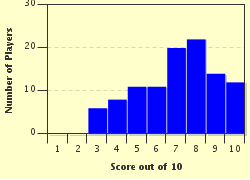Quiz Answer Key and Fun Facts
1. Although there had been previous reformers, Martin Luther is credited with beginning the Protestant Reformation by nailing a list of grievances to the door of All Saints' Church in Wittenberg. What were his grievances called?
2. At the time Martin Luther began his protest, he was a priest and a professor of theology. What occupation had his father wanted him to pursue?
3. In the document that he nailed to the door of All Saints' Church, Martin Luther pointed out instances of what he saw as clerical abuse of power. One of these had to do with making monetary loans with excessive interest rates. What is this practice called?
4. Probably the largest part of Martin Luther's protest had to do with the actions of a certain Dominican friar and "salesman". What was his name?
5. Martin Luther's main complaint was the Church policy that the pardoning of punishment in Purgatory could be purchased. What was this called?
6. During Martin Luther's time, why had the Catholic Church embarked on such an ambitious money-raising program?
7. As Martin Luther studied the Bible, he began to formulate his own belief that mankind received God's grace through an action that he called "justification by _________"?
8. Although Martin Luther's new church became known as the Lutheran Church, he preferred that his followers be known as?
9. Along with the formation of a new church, Martin Luther's protest also prompted a reform movement in the Catholic Church.
10. One of Luther's greatest achievements was the translation of the Bible into the German vernacular.
Source: Author
ponycargirl
This quiz was reviewed by FunTrivia editor
bloomsby before going online.
Any errors found in FunTrivia content are routinely corrected through our feedback system.

